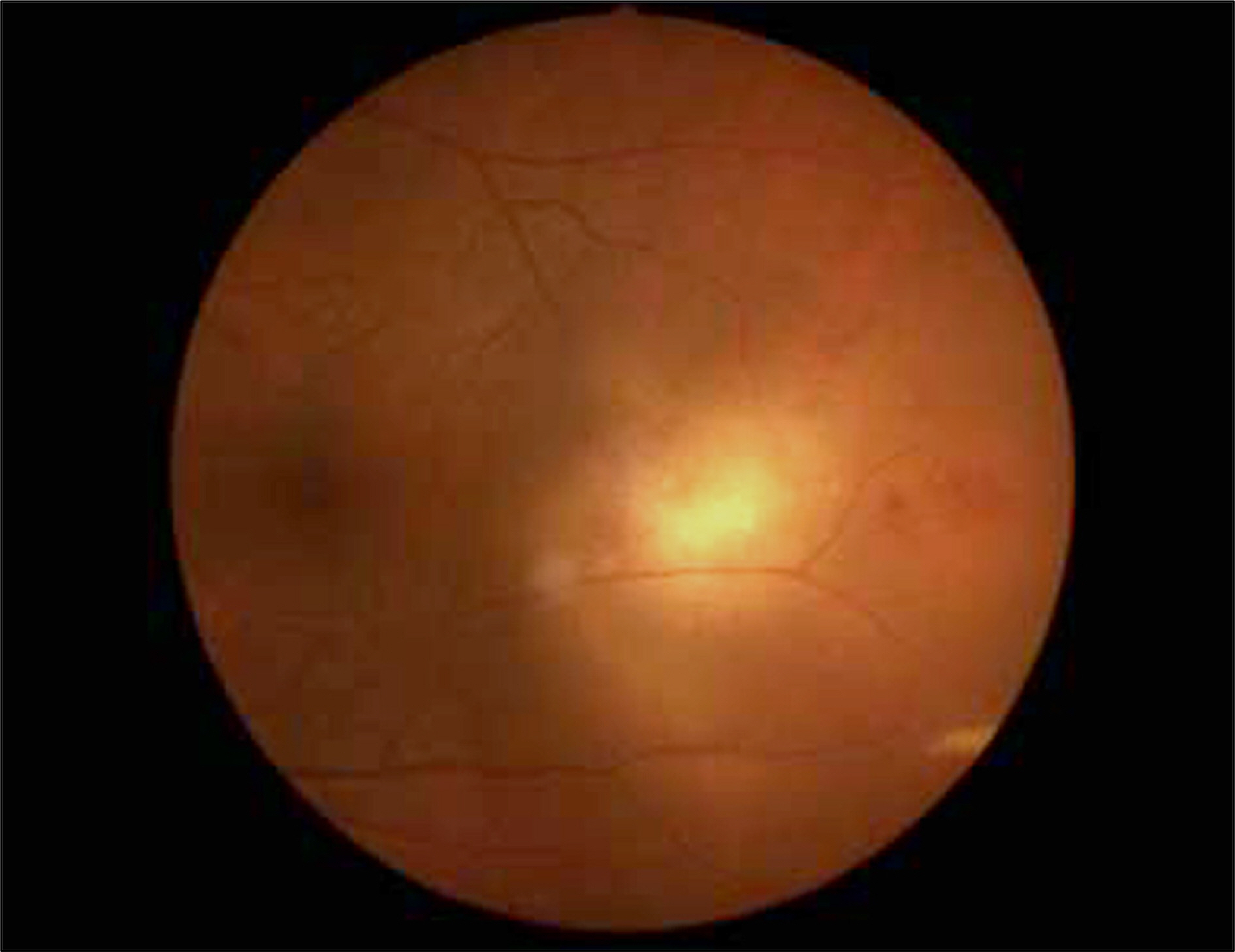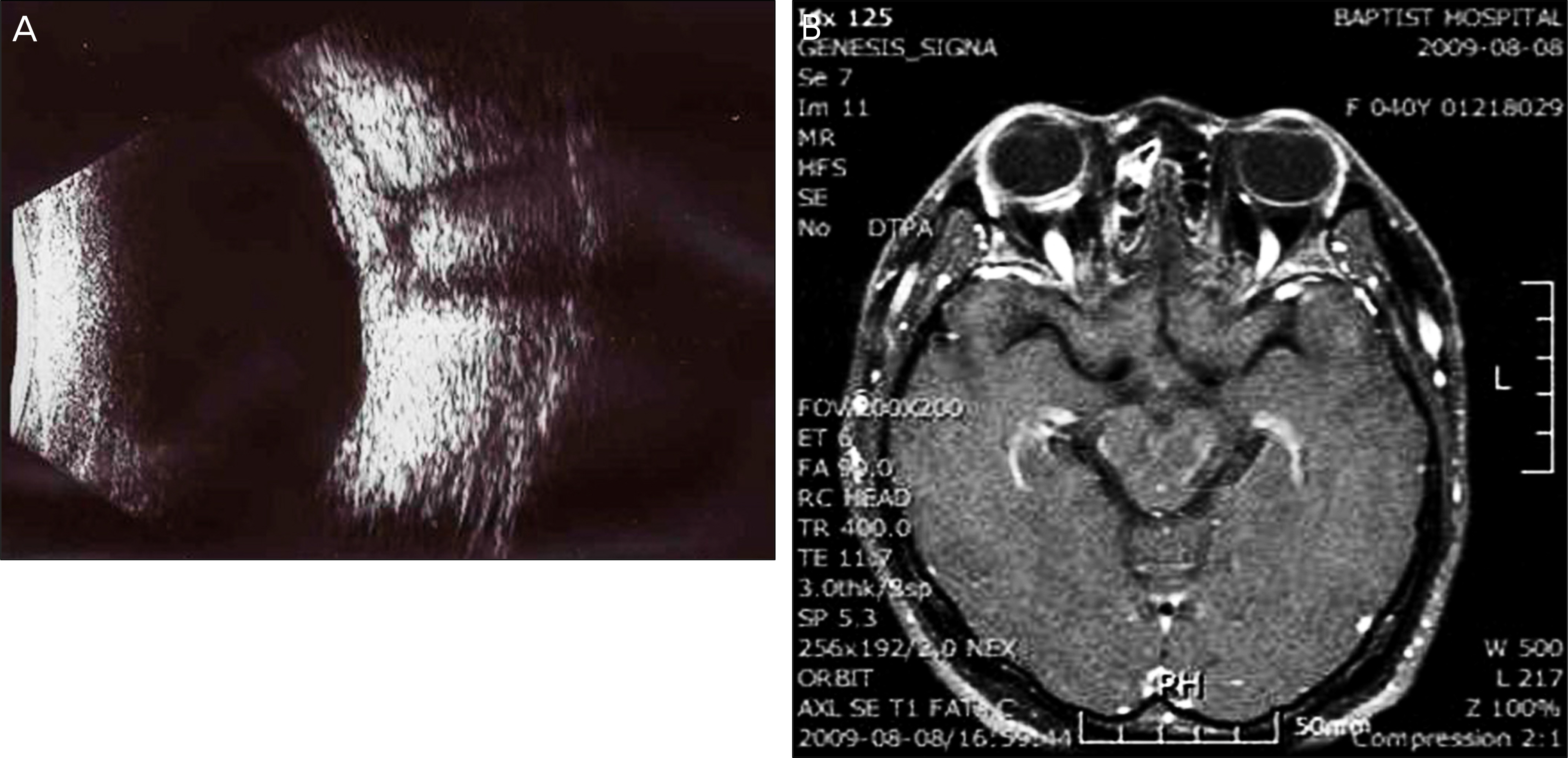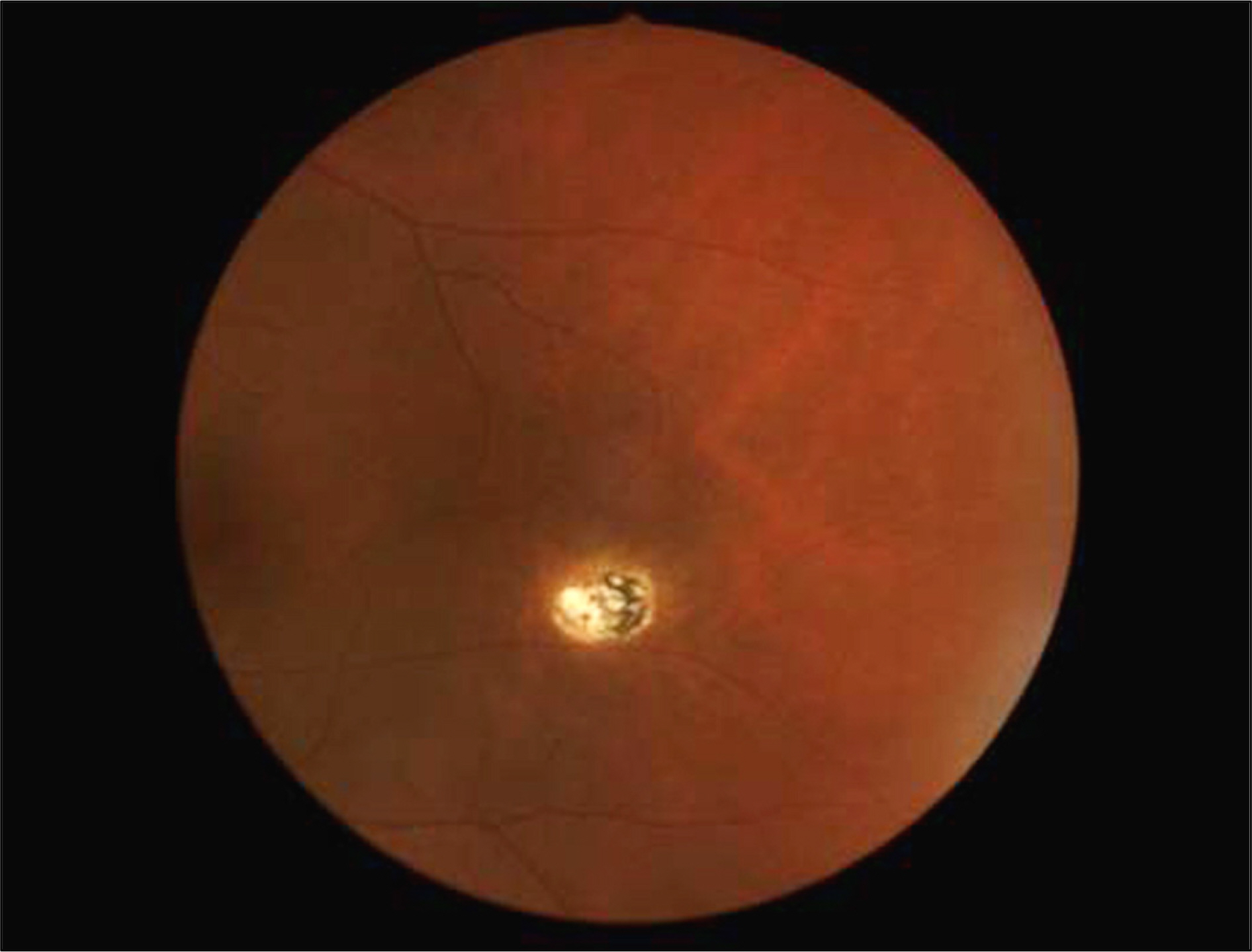J Korean Ophthalmol Soc.
2010 Dec;51(12):1659-1664.
A Case of Recurrent Posterior Scleritis With Hyperthyroidism in Both Eyes
- Affiliations
-
- 1Department of Ophthalmology, Wallace Memorial Baptist Hospital, Busan, Korea. kjdeye@naver.com
Abstract
- PURPOSE
Posterior scleritis is known to be a rare disease. The authors of the present study herein report a case of posterior scleritis, which occurred in a patient's eye, accompanied by hyperthyroidism and recurring in the other eye one year later.
CASE SUMMARY
A 39-year-old female patient visited the hospital for ocular pain in the left eye and a headache. The patient was diagnosed with posterior scleritis through fundus examination, ultrasonography, CT and MRI, and an effective outcome of treatment was obtained by oral administration of methylprednisolone. Four months after discharge, the patient received left subtotal thyroidectomy for thyroid papillary cancer. Seven months after surgery she visited again, due to ocular pain that started 1 week earlier in the left eye, as well as a headache, and was diagnosed with posterior scleritis upon fundus examination, ultrasonography and MRI. Methylprednisolone was administered orally and an effective treatment result was obtained. After discharge, the patient was followed up for 5 months and did not show any signs of recurrence.
CONCLUSIONS
When a hyperthyroidism patient has ocular pain or a headache, the possibility of posterior scleritis accompaniment should be considered, as well as the possibility that posterior scleritis, which already occurred in one eye, may recur in the other eye.
Keyword
MeSH Terms
Figure
Reference
-
References
1. Kim SW, Lee KH, Lee EK. A case of posterior scleritis associated with ciliochoroidal detachment and anterior uveitis in background diabetic retinopathy patient. J Korean Ophthalmol Soc. 1995; 36:1234–8.2. Rosenbaum JT, Robertson JE. Recognition of posterior scleritis and its treatment with indomethacin. Retina. 1993; 13:17–21.
Article3. Kim MW, Chung YT. Retinal pigment epithelial detachment in posterior scleritis. J Korean Ophthalmol Soc. 1989; 30:823–7.4. Benson WE. Posterior scleritis. Surv Ophthalmol. 1988; 32:297–316.
Article5. Joo SH, Choi JK. A case of posterior scleritis associated with relapsing polychondritis. J Korean Ophthalmol Soc. 1989; 30:665–70.6. Benson WE, Shields IA, Tasman W, et al. Posterior scleritis: a cause of diagnostic confusion. Arch Ophthalmol. 1979; 97:1482–6.
Article7. McCluskey P, Wakefield D. Intrascleritis. Arch Ophthalmol. 1987; 105:793–7.8. McGavin DD, Williamson J, Forrester JV, et al. Episcleritis and scleritis. A study of their clinical manifestations and association with rheumatoid arthritis. Br J Ophthalmol. 1976; 60:192–226.
Article9. Anderson B Sr. Ocular lesions in relapsing polychondritis and other rheumatoid syndromes. Am J Ophthalmol. 1967; 64:35–50.
Article10. Foster GS. Immunosuppressive therapy for external ocular inflammatory disease. Ophthalmology. 1980; 87:140–50.
Article11. Watson PG, Hazleman BL. The sclera and systemic disorders. London: Saunders;1976.12. Vitale AT, Maza MS. Scleral inflammatory disease. Stephen J Ryan, editor. Retina. 4th revised ed.Los Angeles: Elsevier Mosby;2006. 2:chap.p. 98.
Article13. Hedges TR Jr, Leopold IH. Parallel retinal folds; Their significance in orbital space-taking lesions. Arch Ophthalmol. 1959; 62:353–5.14. Nettleship E. Peculiar lines in the choroid in a case of postpapillitic atrophy. Trans Ophthalmol. 1981; 88:565–74.15. Jellinek EH. The orbital pseudotumor syndrome and its differentiation from endocrine exophthalmos. Brain. 1969; 92:35–8.16. Berger B, Reeser F. Retinal pigment epithelial detachment in posterior scleritis. Am J Ophthalmol. 1980; 90:604–7.17. Cappaert WE, Purnell EW, Frank KE. Use of B-sector scan ultrasound in the diagnosis of benign choroidal folds. Am J Ophthalmol. 1977; 84:375–9.
Article18. McCluskey P, Wakefield D. Current concept in the management of scleritis: a study of their clinical manifestations and association with rheumatoid arthritis. Br J Ophthalmol. 1988; 16:169–76.19. Watson PG, Hayreh SS. Scleritis and episcleritis. Br J Ophthalmol. 1976; 60:163–91.
Article20. Wakefield D, McCluskey P. Cyclosporin therapy for severe scleritis. Br J Ophthalmol. 1989; 73:743–6.
Article21. Nussenblatt RB, Palestine AG. Cyclosporine: immunology, pharmacology and therapeutic uses. Surv Ophthalmol. 1986; 31:159–69.
Article
- Full Text Links
- Actions
-
Cited
- CITED
-
- Close
- Share
- Similar articles
-
- Retinal Pigment Epithelial Detachment in Posterior Scleritis
- The Effect of an Intravitreal Dexamethasone Implant for Refractory Posterior Scleritis
- A Case of a Patient with Refractory Scleritis Treated with Rituximab
- A Case of Recurrent Scleritis Associated with Menstrual Cycle
- A Case of Post. Scleritis Associated with Ciliochoroidal Detachment and Ant. Uveitis in Background Diabetic Retinopathy Patient








